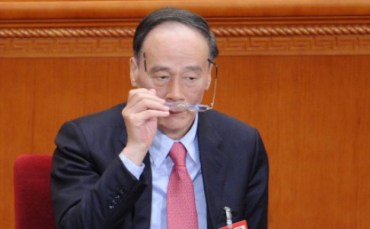Faced with a persistent influx of rural workers, China’s most populous province plans to allow more migrant residents to settle permanently in its cities, in its latest effort to ease decades-old curbs on rural-urban migration.

Under new guidelines published this week, Guangdong authorities aim to grant local household registration to roughly 13 million migrant workers by 2020, allowing them to access public services—spanning housing, health-care, social security and education—that are typically reserved for urban residents.
Guangdong has often taken the lead in efforts to liberalize the hukou system, a national household-registration regime that curbs rural-urban migration by tying benefits like health care and pensions to a person’s place of birth. Experts say the system forces many rural migrants to live as second-class citizens in urban areas, aggravating social inequality while fueling tensions between locals and outsiders.
Hukou reforms are a pressing matter for Guangdong, a southern Chinese manufacturing hub that hosts the country’s largest transient population. Among its roughly 110 million residents, more than 24 million are migrants from other regions, while another 10.6 million have relocated within the province.
“Reforming the household-registration system will speed up our province’s urbanization process, and facilitate the coordinated development of the Pearl River Delta region,” Peng Hui, deputy director-general of Guangdong’s public security department, told a news briefing this week.
As part of the reforms, provincial officials will aim to “equalize” the provision of public services and ensure “balanced” economic development between rural and urban areas, according to the new guidelines.
China has used the hukou system since the 1950s to keep people from moving to the cities and forming the sort of slums that plague other developing nations. In recent decades, however, rural migrants have increasingly bucked the system to seek better opportunities in urban areas, without approval to live there.
Beijing, for its part, has since changed tack and pushed to urbanize its population of nearly 1.4 billion people, of which about 45% still in live in rural areas. But experts say the government must speed up its dismantling of the hukou system, warning that social tensions could fester and even boil over in the coming decade as China’s “floating population” of more than 250 million continues to expand.
Last year, Beijing pledged some changes to the hukou system, with restrictions to be lifted first in small towns. More stringent requirements will remain on those who want to live in larger cities, which are generally more attractive to migrants.
Guangdong’s plan follows a similar approach. Provincial officials say they plan to “fully liberalize” settlement rules in small, county-level cities and so-called “administratively designated towns,” where migrants with legal and stable places of residence will be allowed to apply for permanent residency.
via 13 Million Guangdong Migrants Could Gain Permanent Residence By 2020 – China Real Time Report – WSJ.





